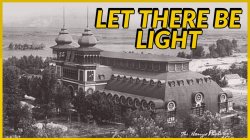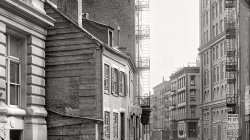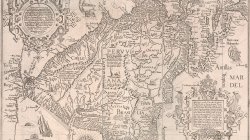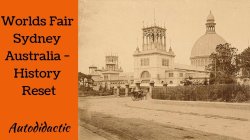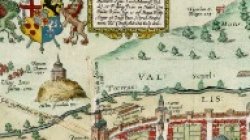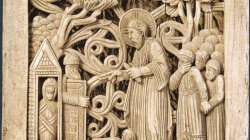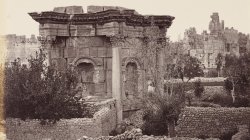You are using an out of date browser. It may not display this or other websites correctly.
You should upgrade or use an alternative browser.
You should upgrade or use an alternative browser.
Random Article
-
Replies: 0
1843: Water Jet Propulsion
-
Replies: 0
1900: Power Plant in Dresden
-
Replies: 0
Movie | Moonfall (2022)
-
Replies: 3
Uxmal Ruins: where are these pyramids?
Our timeline could be much shorter than we think...
- 168,679
- 142
- 32
Time is the continued sequence of existence and events that occurs in an apparently irreversible succession from the past, through the present, into the future. It is a component quantity of various measurements used to sequence events, to compare the duration of events or the intervals between them, and to quantify rates of change of quantities in material reality or in the conscious experience.
Continue…
Who is depicted on the Minin and Pozharsky pedestal bas-relief?
- 18,250
- 15
- 8
The Monument to Minin and Pozharsky is a bronze statue designed by Ivan Martos and located on the Red Square in Moscow, Russia, in front of Saint Basil's Cathedral. The statue commemorates Prince Dmitry Pozharsky and Kuzma Minin, who gathered an all-Russian volunteer army and expelled the forces of the Polish–Lithuanian Commonwealth under the command of King Sigismund III of Poland from Moscow, thus putting an end to the Time of Troubles in 1612.
Continue…
Chronology: how old is America?
- 66,983
- 44
- 19
Prince Popiel ІІ was a legendary 9th century ruler of the West Slavic tribe of Goplans and Polans and the last member of the pre-Piast dynasty, the Popielids. As the story goes, a throng of mice and rats (which had been feeding on the unburnt bodies of Popiel's uncles) rushed into the tower, chewed through the walls, and devoured Popiel and his wife alive.
Continue…
Who founded and how old is Moscow?
- 21,063
- 9
- 11
The first known reference to Moscow dates from 1147 AD as a meeting place of Yuri Dolgoruky and Sviatoslav Olgovich. At the time it was a minor town on the western border of Vladimir-Suzdal Principality. The chronicle says, "Come, my brother, to Moskov". In 1156 AD, Knyaz Yury Dolgoruky fortified the town with a timber fence and a moat. When the Grand Duchy of Moscow evolved into the Tsardom of Russia, Moscow still remained as the political...
Continue…
What happened to Fort York in Manitoba, Canada?
- 11,725
- 5
- 10
From the 17th through late 19th century, the depot at York Factory and its predecessors were the central base of operations for the Hudson's Bay Company. Between 1788 and 1795, the company constructed an octagonal star fort of stone and brick at York Factory. The choice of material was poor, however, as the stone and brick could not stand up to heaving permafrost, and in 1831, the stone fort was razed.
Continue…
The Biblical Moses is primarily based on the figure of conquistador Fernando Cortés
- 21,427
- 11
- 13
Apologetes like Finegan, undeterred, manage to count these problems as a special form of proof. The sacking of Jerusalem, he says in this line, "is reflected only too clearly in the archeological realm by the paucity of important materials." And as for the Conquest of Caanan, he notes that "Joshua evidently did a thorough job of destruction." Tautologies like these and the occasional excavated well that might have been the one Joseph drew...
Continue…
Funerary Chullpa Towers and the Aymara People
- 12,084
- 6
- 15
Chullpas are ancient Aymara funeral towers originally built for nobles and their families. They are found across the Altiplano in Peru and Bolivia. They can be cylindrical or rectangular, low or tall, and made of stone or adobe. The tallest are about 40 feet high. All of the chullpas have small openings facing east, towards the rising sun. Corpses in each tomb were typically placed in a fetal position along with some of their belongings...
Continue…
The City of Harbin or the Battle for Cambalu?
- 19,223
- 4
- 7
Harbin is the capital of Heilongjiang, China’s northernmost province. The city grew in the late 19th century with the influx of Russian engineers constructing the eastern leg of the Trans-Siberian Railroad. The city's Russian architecture includes its green-domed Saint Sophia Cathedral, an Eastern Orthodox church now a local history museum.
Continue…
Babylon, Baghdad, Lake Tharthar: what and where was the real Babylon?
- 15,620
- 5
- 8
Babylon is the most famous city from ancient Mesopotamia whose ruins lie in modern-day Iraq 59 miles southwest of Baghdad. The name is thought to derive from bav-il or bav-ilim which, in the Akkadian language of the time, meant 'Gate of God' or 'Gate of the Gods' and 'Babylon' coming from Greek.
Continue…
Was previous Jerusalem located in England?
- 32,852
- 23
- 9
The stolen and perverted writings of Homer and Ovid, of Plato and Cicero, which all men ought to contemn, are set up by artifice against the Sublime of the Bible; but when the New Age is at leisure to pronounce, all will be set right, and those grand works of the more ancient, and consciously and professedly Inspired men will hold their proper rank, and the Daughters of Memory shall become the Daughters of Inspiration. Shakespeare and Milton...
Continue…
Fortress of Mongatz aka Palanok Castle aka Mukachevo Castle. Who built it?
- 14,304
- 8
- 6
The fortress is located on a former 68 meter high volcanic hill. There is no accurate data on the circumstances of its construction. Archaeological research shows that the area was already inhabited in the Neolithic era, and that in the Bronze and Iron Ages there was a fortress on the site of today's castle. At the time of the conquest, a fortress built from piles stood at the top of today's castle hill. The castle complex consists of three...
Continue…
How old is the Aral Sea?
- 31,183
- 24
- 20
The shallow Aral Sea was once the world’s fourth largest body of inland water. The remnants of it nestle in the climatically inhospitable heart of Central Asia, to the east of the Caspian Sea. The Aral Sea and its demise are of great interest and increasing concern to scientists because of the remarkable shrinkage of its area and volume that began in the second half of the 20th century - when the region was part of the Soviet Union - and...
Continue…
Missing photographs of the existing drawings. Where are they?
- 19,240
- 7
- 22
The first photograph published in an American newspaper - actually a photomechanical reproduction of a photograph - appeared in the Daily Graphic on March 4, 1880. Before that time it was common practice for American editors to enlist artists to sketch and report on news events, from steamboat explosions to the battles of the Civil War. It was not until 1919, with the launching of New York's Illustrated Daily News, that American newspapers...
Continue…
1860s Submarine: Ictíneo II by Narcís Monturiol
- 17,115
- 5
- 10
Ictíneo II was a pioneering submarine launched in 1864 by the Spanish engineer Narcís Monturiol and was the first air independent and combustion powered submarine and was the first submarine to overcome the basic problems of machine powered underwater navigation. The Ictíneo II was originally intended as an improved version of the handpowered Ictíneo I. The Ictíneo II made her maiden voyage under human power on 20 May 1865, submerging to...
Continue…
1783 Calabria Earthquake Phenomena. Was it a deliberate attack?
- 10,413
- 3
- 5
The 1783 Calabrian earthquakes were a sequence of five strong earthquakes that hit the region of Calabria in southern Italy (then part of the Kingdom of Naples), the first two of which produced significant tsunamis. The epicenters form a clear alignment extending nearly 100 km from the Straits of Messina to about 18 km SSW of Catanzaro. The epicenter of the first earthquake occurred in the plain of Palmi. The earthquakes occurred over a...
Continue…
Ancient Greek Juan de Fuca - who was he?
- 14,273
- 0
- 9
In April 1596, English merchant Michael Lok and Apostolos Valerianos, a Greek pilot and mariner, meet in Venice to discuss a voyage that Valerianos had taken in 1592. The mariner, who was better known as Juan de Fuca, describes how he sailed from Mexico, north along the Pacific Coast in search of the Strait of Anian, later called the Northwest Passage. Juan de Fuca says that he had reached 47 degrees latitude, turned east, and sailed into the...
Continue…
1906: Seattle Central Library. Demolished in 1957.
- 37,636
- 48
- 9
The structure is 200 feet long, having its main front on Fourth Avenue, or towards the west. It is set back 40 feet from the street line, where it rises from a terrace that breaks the grade of the incline and forms a desirable setting for the building. A foreground of 20 feet is allowed on either side and is contemplated for the rear after the erection of future extensions. ... The main floor is reached by a monumental stairway from the...
Continue…
1770s: Seattle, Tsunami, Earthquakes, Lake Washington and Underwater Forests
- 20,202
- 10
- 5
A major earthquake occurred on the Seattle Fault about 900 C.E., creating multiple forms of evidence that led to the discovery of the fault and its description in Science in 1992. The landslides on heavily wooded land created "bizarre submerged forests" of old-growth timber, preserved by the cool water and low oxygen in the deep lake. These sunken forests were known to early European settlers of the Seattle area, for whom the snags could be a...
Continue…
Underground Seattle - How and When did it get Buried
- 13,812
- 0
- 10
The Great Seattle Fire was a fire that destroyed the entire central business district of Seattle, Washington on June 6, 1889. The conflagration lasted for less than a day, burning through the afternoon and into the night, and during the same summer as the Great Spokane Fire and the Great Ellensburg Fire. Seattle quickly rebuilt using brick buildings that sat 20 feet (6.1 m) above the original street level. Its population swelled during...
Continue…
19th Century: Public & Private Steam Transportation
- 27,511
- 15
- 14
Regular intercity bus services by steam-powered buses were pioneered in England in the 1830s by associates of Sir Goldsworthy Gurney and by Walter Hancock among others, running reliable services over road conditions which were too hazardous for horse-drawn transportation. Steam carriages were much less likely to overturn, and did not "run away with" the customer as horses sometimes did. They travelled faster than horse-drawn carriages. They...
Continue…
Latest resources
-
-
-
-
Queen Califia and the Island of California She Ruled in ParadiseUntil the Great Floods Of the Early 1800’s
-
Blog Statistics
- Articles
- 670
- Comments
- 4,045
- Media items
- 848
- Resources
- 104
- Views
- 8,774,649
- Members
- 1,523
- Latest member
- Oleksandr


